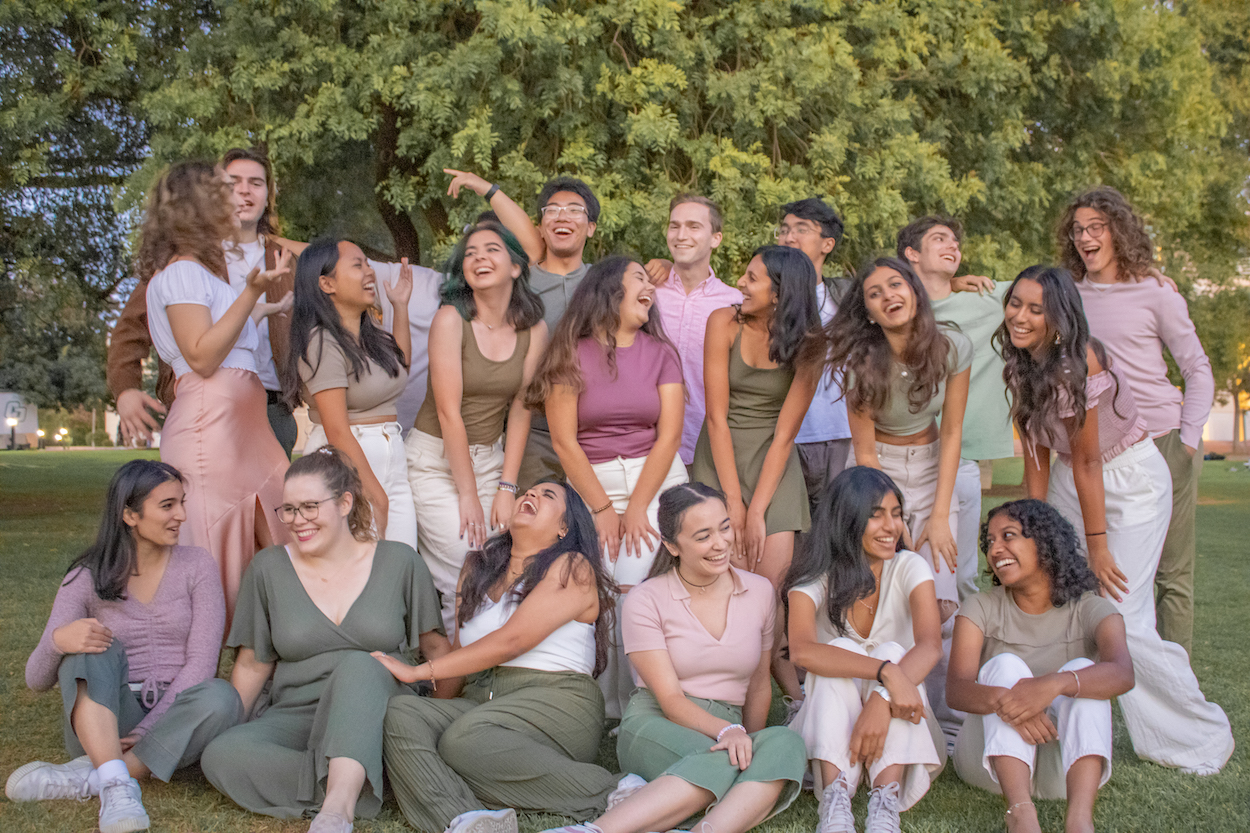An interview with “That’s the Key”: Cal Poly’s a cappella club

KCPR sat down with a cappella club “That’s the Key” to discuss how to make an a cappella song, creative freedom in music, and their upcoming EP.
One of two a cappella groups on campus, “That’s the Key” (TTK) was established in 2009. The club performs in a showcase every quarter, in addition to other shows, such as the SLO music hour in the University Union and the Central Coast Pride Fest at Laguna Lake park. The group name is a musical pun, following an a cappella convention. “A cappella groups in general always try to get a pun in their names,” club president and biology junior Jayme Schick said.
The club members write the “arrangements,” or a cappella versions of a song, themselves. Since a cappella forgoes instruments and relies solely on vocals, there is no predetermined way to arrange a song in a cappella form.
“Arranging a cappella is like converting [a song] because a cappella is fundamentally a really, really different mode of making music than anything else,” music director and physics junior Michael Dalsin said. When arranging a song, writers have to determine how to make each member’s voice come together cohesively.
“Every part has random syllables and random things and it sounds weird, but when you put it together, it’s cool,” Schick said.
However, arranging the songs themselves allows the members more creative control over their projects than many of them have experienced in other organizations, such as choirs. As a result, the group is able to perform songs they personally enjoy: usually upbeat pop songs, like “Greedy” by Ariana Grande or “Leave the Door Open’‘ by Bruno Mars, Anderson .Paak and Silk Sonic.
“We’re a lot less structured [than choirs], we can have more conversations. It’s a lot more free flowing,” civil engineering sophomore Chris Chau, who sings baritone in the club.
Dalsin elaborated on the aspects of a cappella that separate it from other musical art forms, namely that the nature of a cappella results in a unique group dynamic.
“You have to think about your vocal technique a lot like you would as a solo artist, but you also have to blend like you wouldn’t in choir,” Dalsin said. The visual aspect is also significant to an a cappella performance. While it is important to maintain vocal technique, Shick noted that audiences tend to give better feedback to the songs accompanied by choreography. “If you’re performing for someone, music’s only really half of what we’re showing people, right?” Shick said.
The club has ambitious plans for the near future, including releasing an EP of their original arrangements, as well as filming a music video for one of the songs.
“This first EP wants to really showcase us and what we can do in terms of music. So we have pop songs and then maybe a couple not as well known songs, but everything has an overarching theme that it’s really TTK, it’s really us” Chau said.
Imbued in the nature of a capella itself is the idea that small parts make one cohesive whole when pieced together — and this quality translates to the relationships within the club.
“We’re also just like a social club. Our nature is that we’re all friends and we hang out a lot” Shick said.
If you want to get involved in a capella, TTK holds annual auditions in the fall. While the members noted that most who try out have previous musical experience, they are open to work with anyone of any skill level who is eager to get involved. Chau chimed in with sage advice, “Just do what you like. There’s a place for you, if you like singing at Cal Poly specifically. There’s jazz, choir, a capella, solo singing. There’s so much to do.”
Keep on the lookout for “That’s the Key’s” upcoming performances and EP by following their instagram. The group can be contacted by email for private performances at [email protected].

